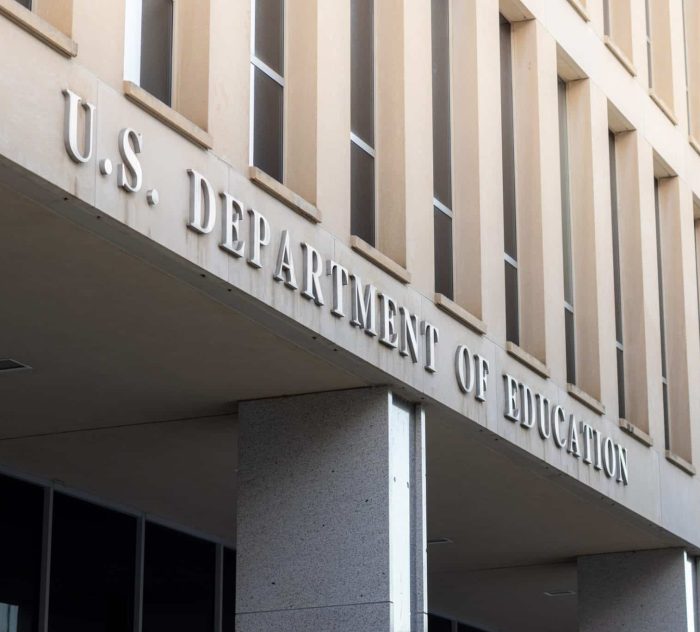On June 12, 2025, the United States Supreme Court unanimously held that claims based on educational services brought under Title II of the Americans with Disabilities Act (“ADA”) and Section 504 of the Rehabilitation Act of 1973 (“Section 504”) “should be subject to the same standards that apply in other disability discrimination contexts.” A. J. T. by & through A. T. v. Osseo Area Sch., Indep. Sch. Dist. No. 279, No. 24-249, 2025 WL 1657415, at *6 (U.S. June 12, 2025).
The Court found that “[n]othing in the text of [Section 504 and the ADA] suggests that such claims should be subject to a distinct, more demanding analysis.” Ibid.
Before AJT, for a parent to establish a Section 504 or ADA claim against a school system in the Second, Fourth, Fifth, Sixth, and Eighth Circuits, the parent needed to establish the school system acted with bad faith or gross misjudgment. Namely, before AJT in these Circuits, “[s]o long as the State officials involved have exercised professional judgment, in such a way as not to depart grossly from accepted standards among educational professionals” there would be no liability under the ADA and Section 504. See Monahan v. Nebraska, 687 F.2d 1164 (8th Cir. 1982).
After AJT, plaintiffs are no longer required to meet this “uniquely stringent” standard.
AJT is a student with a severe epilepsy disorder that limits her availability to receive instruction to the hours of 12 p.m. – 6 p.m. The Osseo Area Schools granted the parents’ request to begin AJT’s day at noon, but denied AJT’s parents’ requests to provide evening instruction. As a result, AJT received 4.25 hours of instruction each day between 2015 and 2018 (compared to the typical 6.5-hour school day for other students). The school system further reduced AJT’s 4.25-hour school day when she transitioned to middle school.
AJT’s parents filed a special education due process petition claiming that the school system denied AJT a free, appropriate public education (“FAPE”) under the Individuals with Disabilities Education Act (“IDEA”). AJT’s parents prevailed. The federal district court and Eighth Circuit affirmed the parents’ victory, reasoning that the school system (to AJT’s disadvantage) prioritized administrative concerns over AJT’s needs in its decision-making.
After their IDEA win, the parents filed a federal action against the school system alleging Section 504 and ADA violations for the school system’s refusal to comply with the parents’ request to extend AJT’s school day to the same length as her peers. The parents sought compensatory damages “in excess of Fifty Thousand Dollars ($50,000.00)” among other requested remedies.
Applying the bad faith or gross misjudgment standard, the United States District Court for the District of Minnesota awarded summary judgment to the school system on the grounds that the parents had not raised a genuine issue that the school system acted in bad faith or gross misjudgment. The Eighth Circuit affirmed, but noted that the parents may have established a genuine dispute about a violation of Section 504 and the ADA if the less stringent deliberate indifference standard were applied.
On April 28, 2025, the Supreme Court heard oral arguments in the case. During oral arguments, counsel for the District expressed concern that reversing Monahan (applying the bad faith or gross misjudgment standard) would expose 46,000 public schools to liability when, for 40 years, they have trained teachers, allocated budgets and obtained insurance, in reliance on Monahan. Counsel for the District also expressed concerns that every good-faith disagreement would risk liability under Section 504 and ADA and even loss of federal funding.
In overturning the bad faith or gross misjudgment standard, the Supreme Court reasoned that such heightened standard is inconsistent with 20 U.S.C. § 1415(l), a provision of the IDEA expressly stating that the IDEA shall not be construed to restrict the remedies independently available to students with disabilities under Section 504 and the ADA. Congress enacted this provision in response to a Supreme Court case (Smith v. Robinson, 468 U.S. 992 (1984)) which (similar to Monahan) restricted the rights of students with disabilities under Section 504 given the extensive remedies available under the IDEA.
Importantly, while the Supreme Court held what the standard for Section 504 and ADA claims in the educational context is not, it did not rule on what the standard is given the narrow scope of the question presented to the Court (i.e., whether Section 504 and ADA require children with disabilities to satisfy a uniquely stringent bad faith or gross misjudgment standard when seeking relief for discrimination relating to their education). The Court simply answered this question in the negative.
The Court did note, however, that the general approach among courts of appeals is not to require proof of intent to discriminate when establishing a Section 504 or ADA violation or when seeking injunctive relief under these statutes. To obtain compensatory damages, the general approach is to require a showing of intentional discrimination by proving the defendant acted with deliberate indifference. Establishing a defendant acted deliberately indifferent requires a showing that the defendant “disregarded a strong likelihood that the challenged action would violate federally protected rights.”
In a concurring opinion written by Justice Thomas and joined by Justice Kavanaugh, Justice Thomas expressed support for the viewpoint that a plaintiff must establish intent to discriminate before the plaintiff can prove a Section 504 or ADA violation. Justice Thomas also expressed skepticism that there can be differing standards for remedies under the ADA and Section 504 (i.e., deliberate indifference for compensatory damages, but no required showing of intent for injunctive relief).
Justices Thomas and Kavanaugh expressed openness to clarifying in the future the particular standards that should apply in ADA and Section 504 litigation.
Key Takeaways
AJT removes the stringent bar in our Circuit for ADA and Section 504 claims based on educational services. These claims are high stakes given the availability of money damages.
Consider leveraging the remaining weeks of summer to review your policies and procedures pertaining to students with disabilities under the ADA and Section 504. Plan staff trainings for the start of the upcoming school year providing a refresher on the requirements of the IDEA, ADA and Section 504. Consider how to hold staff accountable for complying with the Board’s expectations of compliance with these federal laws. Consult with board counsel on the review of policies and procedures and the development of training materials.
Involve board counsel early whenever there is a dispute about the services or accommodations of a child with special needs. Your board counsel can provide advisement on the appropriate legal standards and be a thought partner in crafting resolutions that may help to avoid costly claims.



